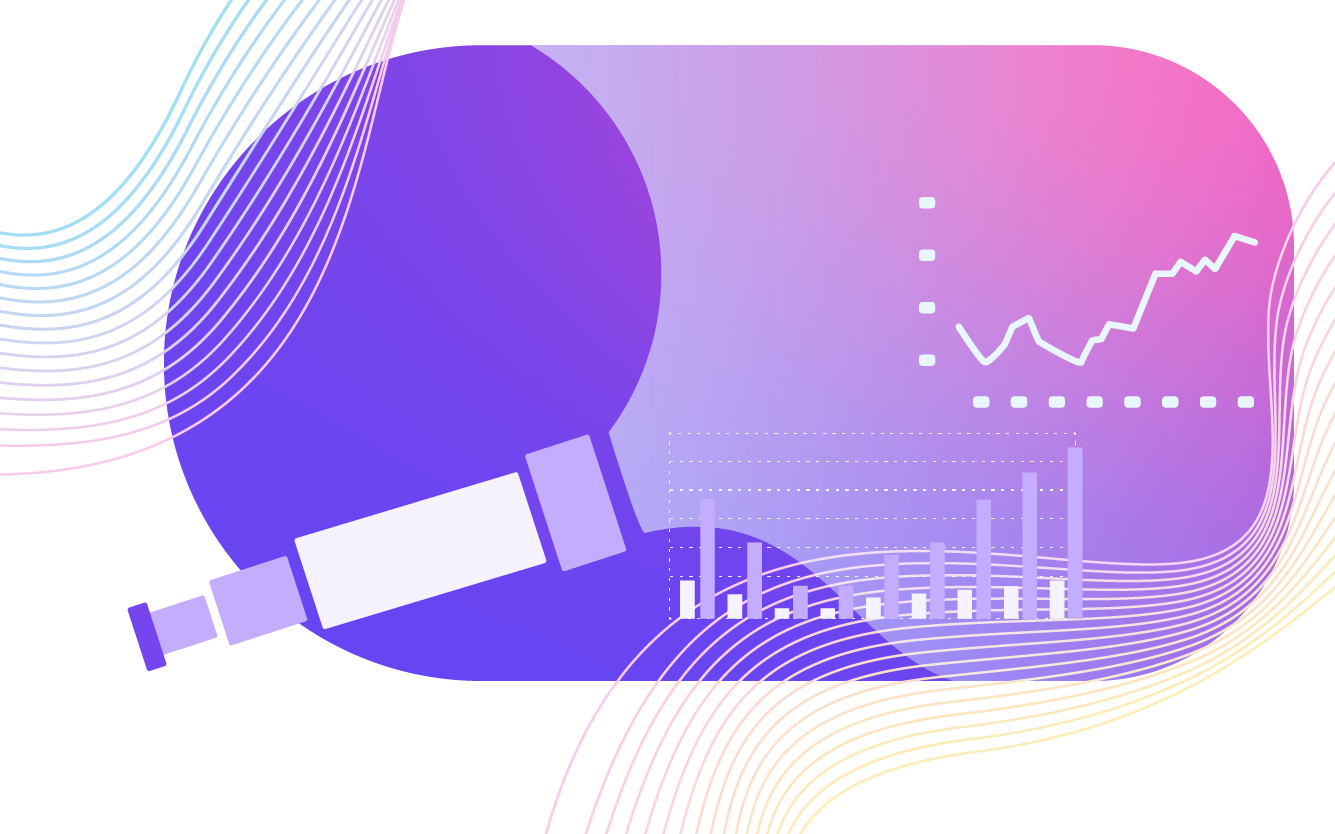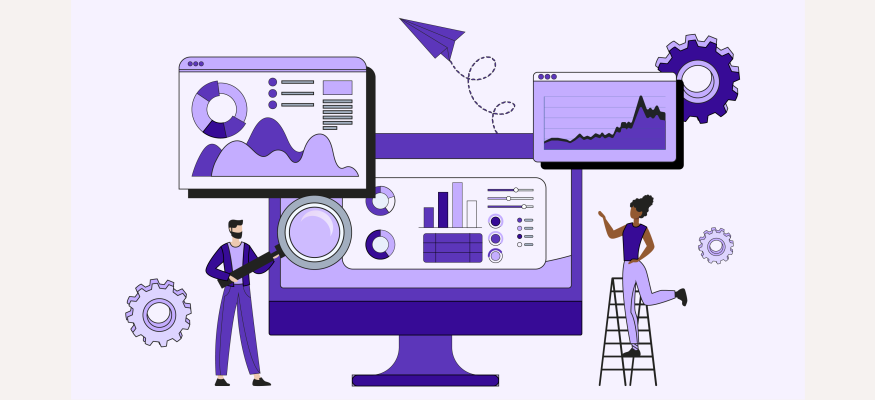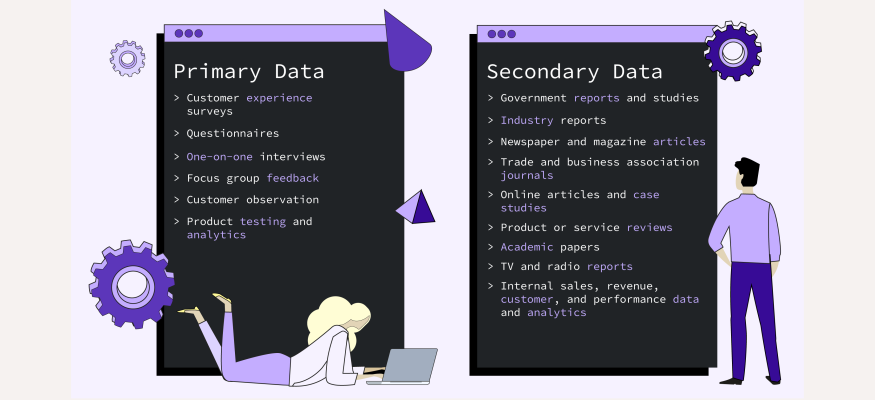
What Types of Data Do You Need for Your Market Research? [2021 Guide]
July 27, 2021
Table Of Contents

With a great idea, smart team, and sustainable business plan, you’re almost ready for success. We say “almost” because there’s one major thing you may be missing: market research.
From startups launching a brand new product to established businesses looking to innovate and grow, good market research is the secret weapon of successful companies.
In this post, we’ll cover some market research basics, explore the types of data you need to design and execute a winning market research plan, and talk about how data solutions such as People Data Labs’ products can help supercharge your market research activities.
What is Market Research?
Market research is the discipline of collecting and analyzing data and information to help you better understand what your target customers want and how you can meet their needs.
Conducting market research gives you insight into customer “pain points,” product demand, unfulfilled market needs, and what matters the most to consumers. You also get clarity about how people perceive your brand or product, and how they react to your competitors.
New businesses use market research to validate ideas, test market fit, understand industry trends, and design marketing strategies to connect with their intended audience. Established companies use market research to continue their growth and innovation.
Collecting and evaluating data helps identify areas for improvement, assess demand for new products, and make intelligent, data-driven decisions about new opportunities.
Market research is the best way to make sure your business aligns with customers and competes successfully in your target market.
The Two Main Types of Market Research
All market research falls into two main categories: primary market research and secondary market research. Sure, there are specific kinds of research such as competitive analysis, market segmentation, and brand awareness research, but they all involve using primary and secondary research for specific purposes.
Primary research involves conducting original research with specific objectives. You can do the research and collect the data yourself, or hire someone to do it for you. Either way, the results will be unique to your company, and no one else will be able to access the data you collect.
In contrast, secondary research focuses on reviewing data that’s already been collected by other people for different purposes. It’s sometimes known as “desk research” because you can do it without ever leaving your desk.
To give an example, let’s say you want to do market research about investment apps. You could do secondary research by googling the most popular investment apps, or primary research by developing a user survey to determine which apps people use and what features they like.
Primary market research is useful for identifying specific needs and opportunities, while secondary research helps you understand broad trends in the market. The best market research plans involve both primary and secondary research.
In the following sections, we’ll dig a little deeper into market research data, and explore the pros and cons of primary and secondary data.
Primary Data
Primary data is original data collected as part of your market research activities. You collect primary data from sources you specify to meet your unique needs and the goals of your research effort.
Primary data can be either quantitative or qualitative. Depending on your research goals, it can also be open-ended and exploratory or very focused and specific.
The benefits of primary data include:
In-depth insight helps you dig deep and understand customer motivations so you can improve their experience.
Data customized to your needs ensures the most important questions get answered, allowing you to get conclusive results.
Fresh perspectives and current information about what’s happening in your target market now enables your data to be reliably up-to-date.
The downside of primary data is that it’s usually more expensive and time consuming to collect than other types of data.
The Types of Data Used in Primary Research
Some of the most common types of primary data collected during market research include:
Short customer experience surveys (online or by mail)
Detailed questionnaires (online or by mail)
In-depth one-on-one interviews
Focus group feedback
Customer observation
Product testing and analytics
As you can see, the types of data used for primary research depend on responses from individuals. Thus, the whole point of the exercise is to get deep insight into customer behavior, desires, and perceptions from your ideal customers. As a result, it’s vital to target the right people with your data collection efforts.
That’s where we can help. Our massive database contains resume, contact, demographic, and social data for over 2.5 billion unique individuals.
We can help identify and connect you with people who match your ideal customer profile so that you know who to target for surveys, interviews, and focus groups. Our data solutions allow you to explore specific segments of your customer base and dive deep into industry trends to better grasp your market.
You can have confidence that you’re interacting with people whose input will give you the in-depth information you need to shape your products and marketing efforts. Audience data allows you to stop guessing who you should talk to and go directly to the people who can give you the best insight on market demand, consumer motivation, and brand awareness and perception.
Secondary Data
Secondary data is information collected by others for purposes outside your market research efforts. It can come from sources outside your company, such as government reports, or inside your company in the form of sales data or performance metrics.
Like primary data, secondary data can be either quantitative or qualitative. You use existing secondary data to understand trends in the market and identify areas for deeper study.
Here are a few of the benefits of secondary data:
Broad insights help you understand what’s going on in your target market and where good opportunities may exist
Fast and affordable data licenses are an excellent way to begin your research efforts on a budget.
Accessible competitor research allows you to map out your growth strategy more effectively.
Secondary data also comes with a few cons, including the lack of control over the available data and the risk that the information is obsolete or too broad to offer the insight you need.
The Types of Data Used in Secondary Research
Primary data is limited to the data you collect yourself, but secondary data has a broader scope. Here are some of the types of data used in secondary market research:
Government reports and studies from the Census Bureau, CDC, and other groups
Industry reports from groups such as Pew, Gartner, McKinsey, ands Forrester
Newspaper and magazine articles
Trade and business association journals
Online articles and case studies
Product or service reviews
Academic papers
TV and radio reports
Internal sales, revenue, customer, and performance data and analytics
However, one of the most useful types of secondary data is your internal sales, customer, and performance data.

How Can People Data Labs Help with Your Market Research?
The challenge with secondary data is connecting the broad trends you observe to your unique goals and challenges. People Data Labs has the data and the expertise to help you conduct valuable and insightful analyses on your target market.
See our “How People Data Labs Sources Data” blog for an overview on how we generate our own data.
If you’re looking for ways to supercharge your market research, check out our market research solution.
Our data enrichment tool can help you fill in the gaps in your secondary data and make connections that lead to valuable insight.
If you have further questions or insights on market research, contact us to schedule a free consultation with our expert team.
Like what you read? Scroll down and subscribe to our newsletter to receive monthly updates with our latest content.




